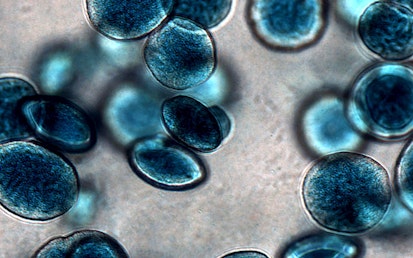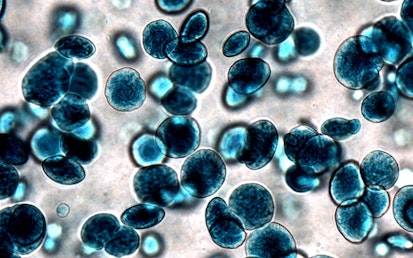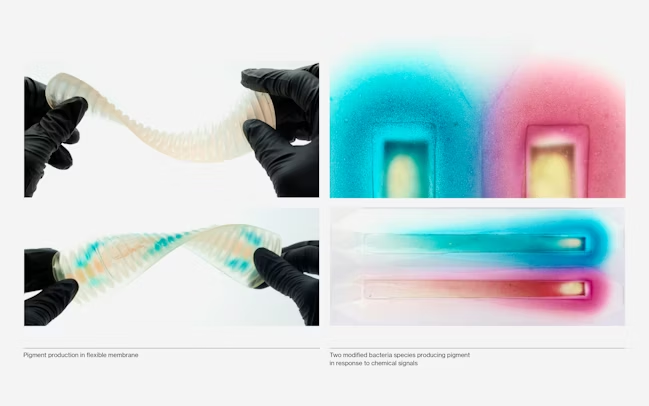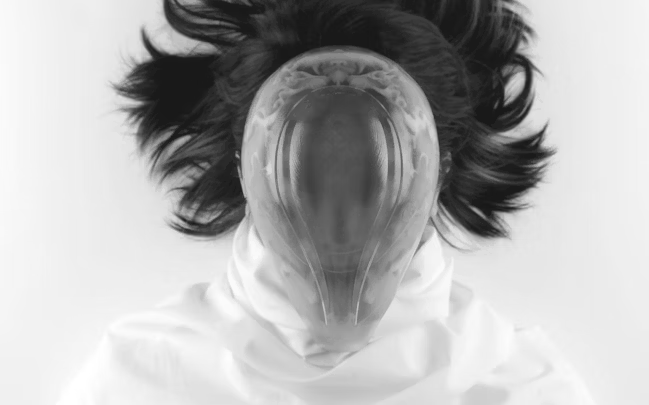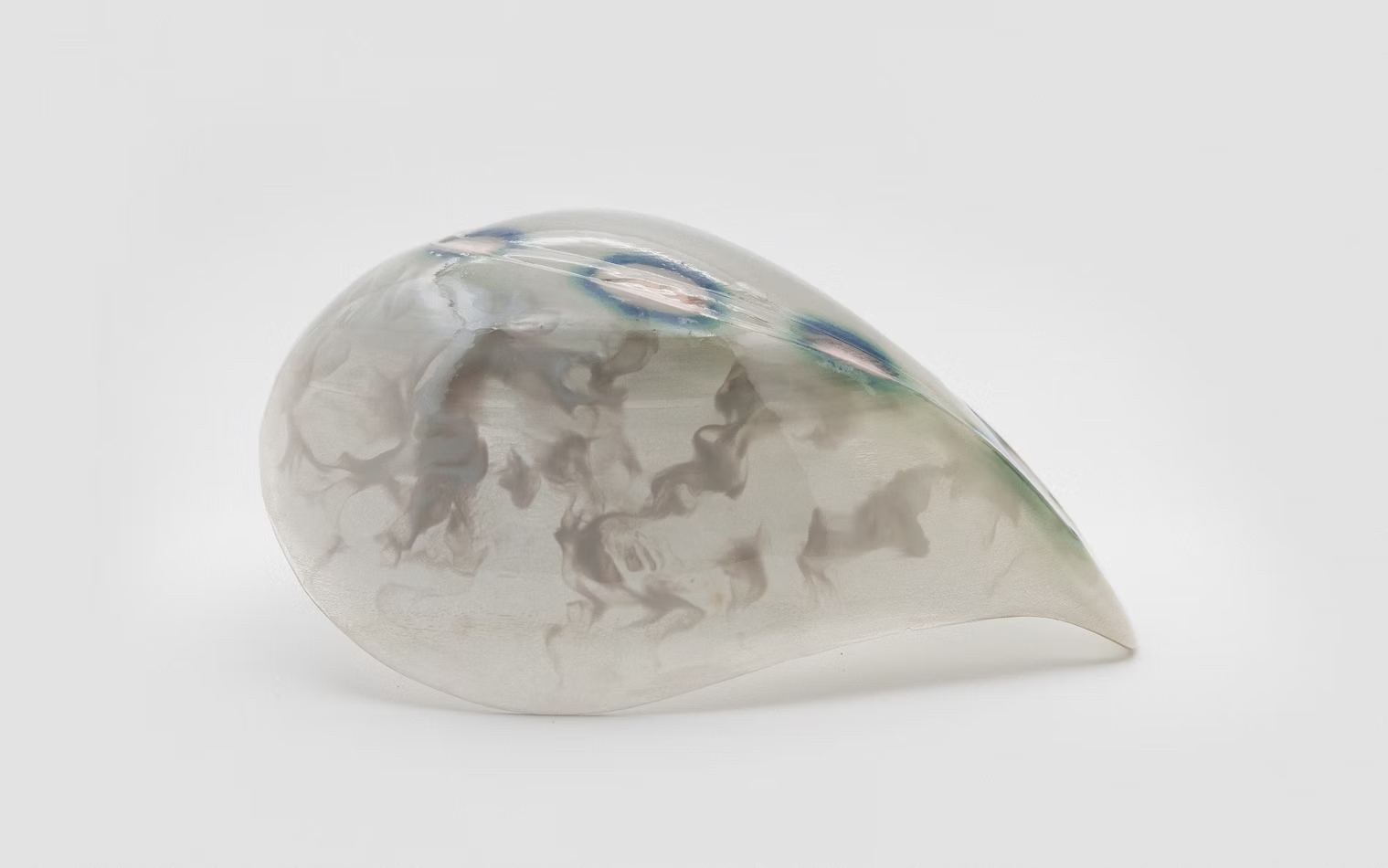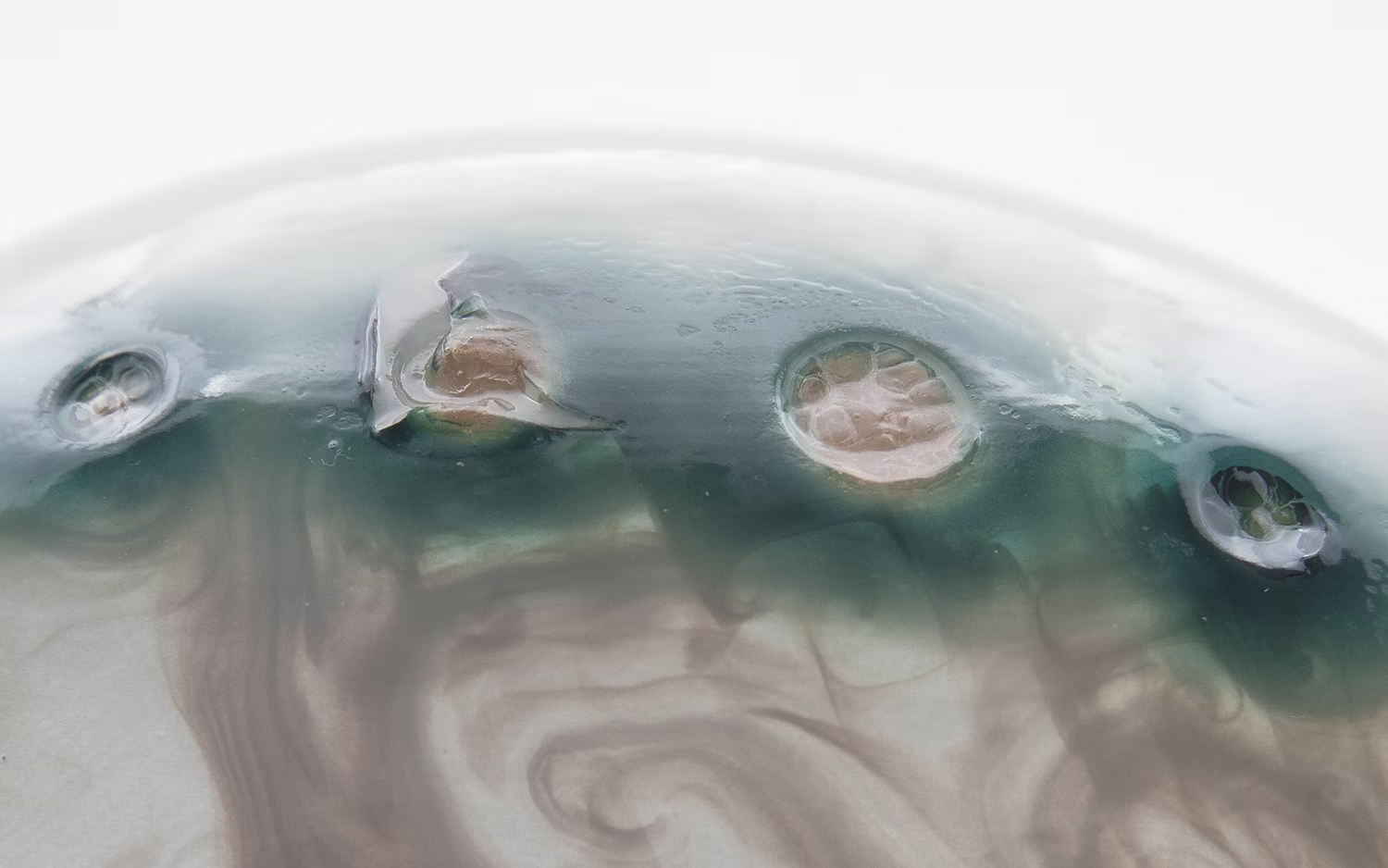VESPERS III

Hybrid living masks
Research team: Christoph Bader, Rachel Soo Hoo Smith, Dominik Kolb, Sunanda Sharma, João Costa, James C. Weaver. Prof. Neri Oxman
Year: 2018
Location: Design Museum, 2016, London, United Kingdom. National Gallery of Victoria, 2018, Melbourne, Australia
Platform: Hybrid Living Materials & Data Driven Material Modeling
Position
The masks in Vespers III are habitats for microorganisms and sites for the creation of new life. The third series revolves around death and rebirth, denoting both spiritual incarnation and biological recapitulation.
Devoid of cultural expressions and initially nearly colorless, these masks are paradoxically the most ‘alive’ of the three series. They literally ‘re-engineer’ life by guiding living microorganisms using spatial features from the artifacts of the dead. The microorganisms' protein expressions are distributed according to the spatial logic provided by the second series.
Process
To create the Vespers III masks, novel tools and techniques were developed that enable tight integration between, and control of, designed and biologically derived properties. Through this process, we have demonstrated a platform to create an entirely new class of materials, termed Hybrid Living Materials.
Computational design is integrated with additive manufacturing and synthetic biology to digitally fabricate objects that direct living microorganisms to produce pigments that emulate the colors of the first series of the collection.

Incubation temperature in Celcius
Average normal body temperature in Celsius
We leverage 3D printable bioactive materials to spatially template the biological response of living microorganisms. Thus, computational and digital fabrication tools are customized to direct the growth and expression of microorganisms contained within the mask.
Our research enables the computational design and digital fabrication of consumer products and freestanding structural materials. From customized cosmeceutical and antibiotic production in wearable devices, to smart packaging and surface coatings that can detect contamination, to environmentally responsive architectural skins, this research offers a new space for biological augmentation across a wide breadth of application domains, by leveraging both resolution and scale.
Doubling Time of E. Coli in minutes
Project
Vespers is a collection of masks exploring what it means to design (with) life. Vespers III features a living mask as an enabling technology. Combined, the three series of the Vespers collection represent the transition from death to life, or from life to death, depending on one’s reading of the collection.
The living masks embody habitats that guide, inform and ‘template’ gene expression of living microorganisms. Such microorganisms have been synthetically engineered to produce pigments and/or otherwise useful chemical substances for human augmentation such as vitamins, antibodies or antimicrobial drugs.
These masks—now living things unto themselves—feature patterns generated by genetic regulatory signals distributed according to the spatial logic provided by the second series. The microorganisms and their byproducts, which animate the mask with properties greater than the sum of its parts, reinterpret the color palette of the first series and thereby biologically recreate their cultural precursors.
Transitioning from vessels of representative neuro-vasculature to actual biological urns, the masks in this series mark a new cycle of life and the notion of continuation. The martyr’s faces are no longer preserved but have transformed into sites of and for new life.
Policy
The project points towards an imminent future where wearable interfaces and building skins are customized not only to fit a particular shape, but also a specific material, chemical and even genetic make-up, tailoring the wearable to both the body and the environment which it inhabits.
Research at the core of this project offers a new design space for biological augmentation across a wide breadth of application domains, leveraging resolution and scale.
Imagine, for example, a wearable interface designed to guide ad-hoc antibiotic formation customized to fit the genetic makeup of its user; or, consider smart packaging or surface coatings devices that can detect contamination; finally, consider environmentally responsive architectural skins that can respond to, and adapt—in real time—to environmental cues.
Credits
Collaborators & Contributors: Gal Begun; Boris Belocon; Kelly Egorova; Jeremy Flower; Ahmed Hosny; Noah Jakimo; Naomi Kaempfer; Wendy Salmon; Tzu-Chieh Tang; New Ancient collection, Stratasys Ltd.; MIT Environmental Health and Safety; Media Lab Facilities; The Center for Bits and Atoms; MIT Media Lab; Danielle Van Zadelhoff
Created in collaboration with Stratasys Ltd. for the New Ancient Collection
All images and videos courtesy of Neri Oxman and The Mediated Matter Group

